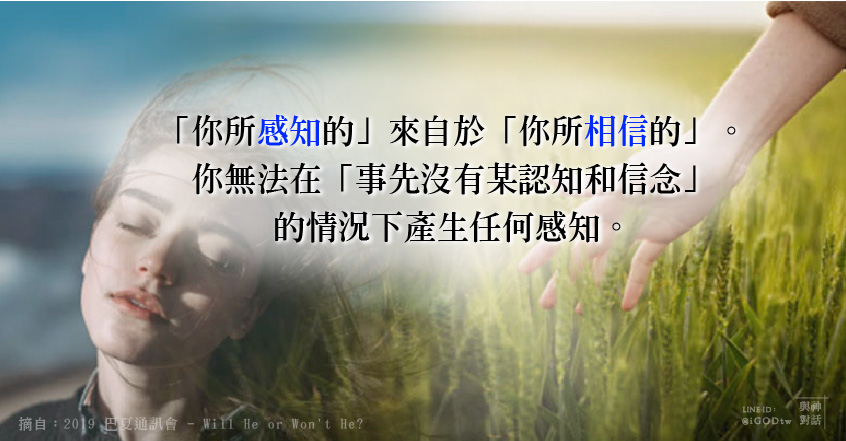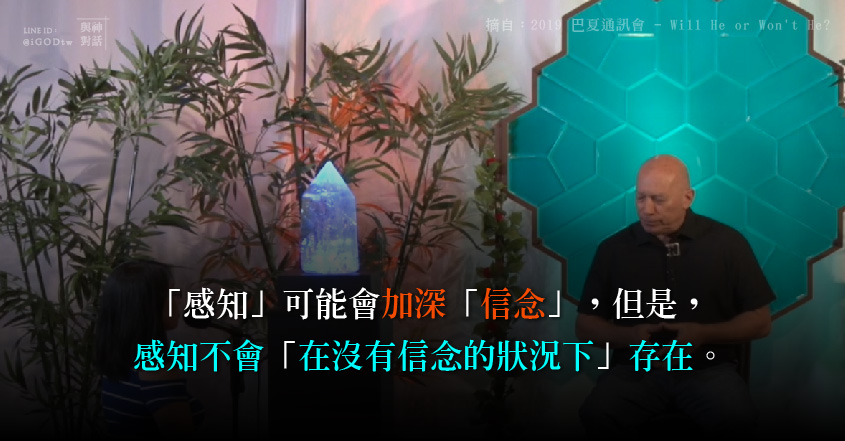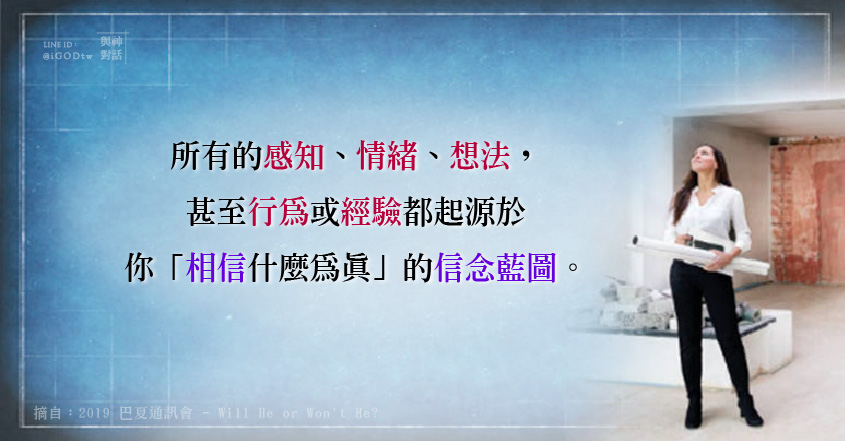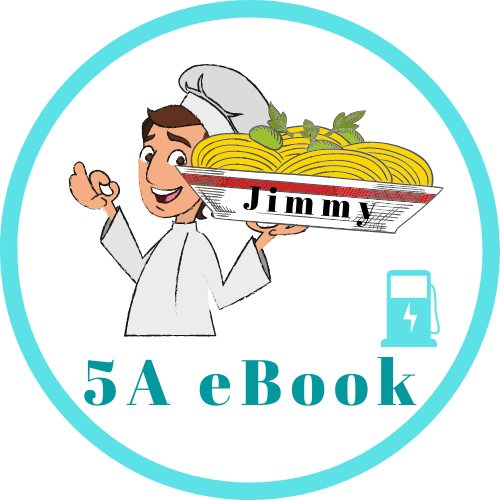【「感知」來自「信念」並經常再加深信念】
巴夏精選短片(2分58秒)【「感知」來自「信念」並經常再加深信念】Bashar596
影片摘自:2019-Will He or Won’t He?
購買網址:http://www.basharstore.com/will-he-or-wont-he/
中文翻譯:Jimmy
【「感知」來自「信念」並經常再加深信念】
What you perceive comes from what you believe first
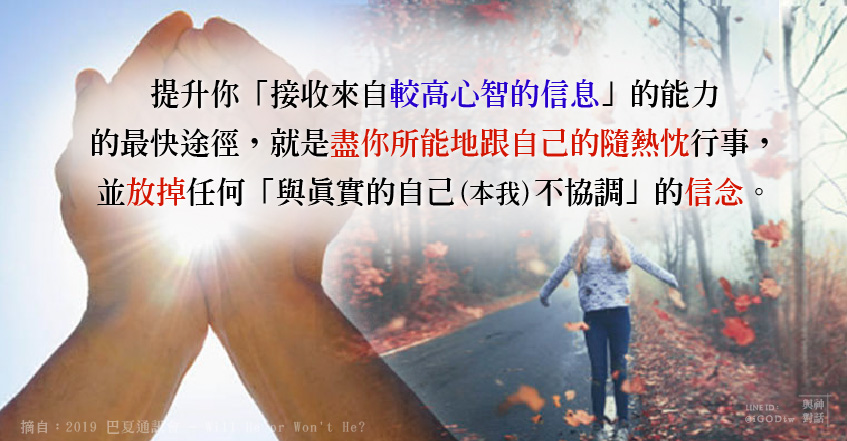
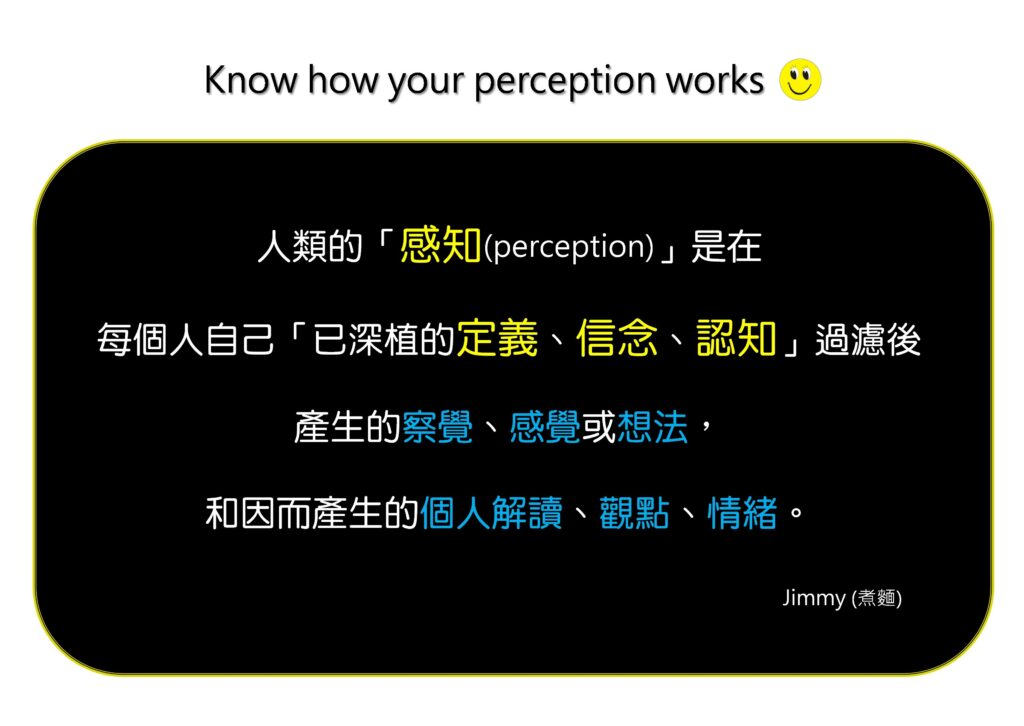
The idea is that if you always follow your passion to the best you can, and let go of any beliefs that are out of alignment with your True Self,
這概念是: 盡你所能地跟隨自己的熱忱行事,並放掉任何「與你真實的自己不協調(與本我不一致)」的信念,
that will be the quickest process that will accelerate your ability to receive more information in a variety of ways from the higher mind.
那會是提升你「以各種方式接收更多來自較高心智的信息」的能力的最快途徑。
That’s why we give you that FORMULA, that’s the short cut.
這正是為何我們給你們那「跟隨自己最高興奮熱忱行動的公式」,給你們那捷徑的原因。
Thank you.
謝謝你。
Does that help?
這對你有幫助嗎?
A little.
一點點。
Oh, alright.
噢,好的。
So, let me ask you this question: What are the belief systems within you that allow you to experience the FORMULA as only helping a little as opposed to helping a lot?
所以讓我問你這個問題:是什麼樣的內在信念系統,使你在體驗這「行動公式」時只對你幫助一點點,而不是幫助很多?
Because I use my brain a lot, and I use what I learned.
因為我經常動用頭腦,而我會運用我所學的。
So what? What’s that got to do with anything? Of course you can do that.
那又如何?那和我們談的有什麼關係?你當然可以那樣做。
Because experience does not always apply to the present situation.
因為「經驗」並不總是適用於當下的狀況。
In what way does it not?
在哪一方面不適用?
For example, if the chicken lives or turnkey lives every morning, it doesn’t mean it can survive the Thanksgiving day.
舉例來說,如果雞或是火雞每天早上都還存活,那並不表示牠可以活過感恩節。
What’s that got to do with you? Are you call yourself a turkey?
那跟你有什麼關係?你把自己比喻為那火雞?
We are in many ways because we believe what we perceived.
就很多種方面來說我們是如此,因為我們相信「我們所感知」的。
But the idea is that “what you perceive” comes from “what you believe first”.
但這概念的重點是:「你所感知的」來自於「你所相信的」。
You can’t have a perception without having a belief first.
你們無法在「事先沒有某認知(信念)的情況下」產生任何感知。
So you might be working it backwards, and that’s why it might seem not to help so much.
所以,你可能是弄反了方向,而那就是為什麼它(跟隨自己熱忱行動的公式)可能看起來沒什麼幫助的原因。
The idea is that a perception might reinforce a belief, but the perception doesn’t exist without the belief first.
這概念是,「感知」可能會加深「信念」,但是,感知不會「在沒有信念的狀況下」存在。(即,人類產生「感知」的過程是:先有「信念」才有「感知/感覺」。)
So if you have a particular perception that you don’t really prefer, dig down and find out what you would have to believe is true about yourself in order to have the perception you’re having.
所以,當你發現自己有某一「你真的不喜歡的感覺」,往自己內在去探究並找出「你必定已相信對你自己是來說是真實的信念」,才會導致你擁有你現在的感知(感覺、看法)。
That’s how it works. Change the belief, the perception and the experience will also change. It can’t be any other way. That’s how it works.
這是它「如何運作」(感知如何產生)的方式。改變信念,感知和經驗就會隨之改變,它無法以任何其他的方式運作。這就是它運作的方式。
That’s why we give you the instruction manual to explain how reality is created, how it actually works, step-by-step.
那就是為什麼我們給你們「指導操作手冊」向你們解說「你們的實相如何被你們創造出」的方式,一步步解說它實際上如何運作的操作手冊。(所有巴夏談「事物如何運作、實相如何運作」的信息,即巴夏所謂的「指導操作手冊」。)
So there is no such thing as a perception that can happen in a vacuum, no such thing as an emotion that can happen in a vacuum, or thought, or behavior, or experience.
因此,沒有所謂「憑空產生(無中生有)的感知」這回事,也沒有「憑空發生的情緒、想法、行為或經驗」這樣的東西。(意思是所有的感知、情緒、想法、行為或經驗都跟「已抱持的信念和定義」有關。)
It all stems from the blueprint that you call “believing something to be true”. So you have to work it backwards and find out what that believe is, and find out if that’s something you want to continue to buy into or let it go.
它們全都起源於你們稱「相信什麼為真」的信念藍圖。因此,你必須在這藍圖上反向順藤摸瓜地找出那信念是什麼,並決定你是否要繼續相信,或是對那信念放手。
Once you let it go, your perceptions and experience will change. It’s that simple.
一旦你放掉那信念,你的感知和經驗將跟著改變。就這麼簡單。
